Essayer OR - Gratuit
Who Were The Samaritans?
Archaeology
|September/October 2021
Investigating a once-powerful sect that has preserved its sacred traditions for millennia

RISING NEARLY 3,000 feet above sea level, Mount Gerizim overlooks the city of Nablus in the West Bank. For more than two millennia, the mountain has served as the holiest place of worship for the Samaritan people. In their telling, the Samaritans are descended from the original Israelites, who escaped from slavery in Egypt and wandered the desert for 40 years before entering the Promised Land. The Samaritan Pentateuch, which relates the same basic narrative as the first five books of the Hebrew Bible, identifies Mount Gerizim as the site where Abraham went to sacrifice his son Isaac and where Joshua took the Israelites to make their first sacrifices after they finally crossed the River Jordan into Israel. According to the Jewish version, these events took place at Mount Moriah, understood to be the future site of Jerusalem, and Mount Ebal, a higher peak across a narrow valley from Mount Gerizim. Rather than building a temple in Jerusalem, as the Jews did, Samaritan texts record that they were instructed by God to worship on Mount Gerizim.
Cette histoire est tirée de l'édition September/October 2021 de Archaeology.
Abonnez-vous à Magzter GOLD pour accéder à des milliers d'histoires premium sélectionnées et à plus de 9 000 magazines et journaux.
Déjà abonné ? Se connecter
PLUS D'HISTOIRES DE Archaeology
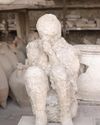
Archaeology
LEGEND OF THE CRYSTAL BRAIN
When most people envision the victims of the eruption of Mount Vesuvius in A.D. 79 that destroyed the cities of Pompeii and Herculaneum, they think of the casts of their bodies made by pouring plaster into voids left by their decaying corpses. Yet not all the physical remains of those who perished in the cataclysm decayed. In one case, a remarkable transformation occurred—a man’s brain turned to glass.
3 mins
July/August 2025
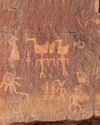
Archaeology
Birds of a Feather
Intriguing rock art in the Four Corners reveals how the Basketmaker people drew inspiration from ducks 1,500 years ago
8 mins
July/August 2025
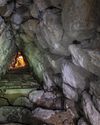
Archaeology
THE HOME OF THE WEATHER GOD
In northern Anatolia, archaeologists have discovered the source of Hittite royal power
13 mins
July/August 2025
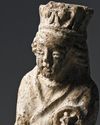
Archaeology
SAINTS ALIVE
Since 2019, archaeologists have been excavating in Berlin's oldest square, known as the Molkenmarkt, or Whey Market.
1 min
July/August 2025
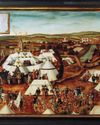
Archaeology
SOLDIERS OF ILL FORTUNE
The Schmalkaldic War, which began in 1546 and lasted less than a year, pitted the forces of the Holy Roman emperor Charles V (reigned 1519-1556) against the Schmalkaldic League, a Protestant alliance formed by German principalities and cities within the empire.
1 mins
July/August 2025

Archaeology
A NEW LOOK AT AN OLD CITY
Archaeologists are reconstructing the complicated 400-year history of Virginia's colonial capital
13 mins
July/August 2025

Archaeology
ITALY'S GARDEN OF MONSTERS
Why did a Renaissance duke fill his wooded park with gargantuan stone
10 mins
July/August 2025
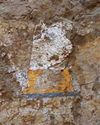
Archaeology
In Search of Lost Pharaohs
Anubis Mountain conceals the tombs of an obscure Egyptian dynasty
3 mins
July/August 2025

Archaeology
Setting Sail for Valhalla
Vikings staged elaborate spectacles to usher their rulers into the afterlife
15 mins
July/August 2025
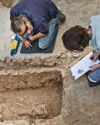
Archaeology
BOUND FOR HEAVEN
During excavations of a Byzantine monastery in 2017 just north of Jerusalem's Old City, a team led by Israel Antiquities Authority archaeologists Zubair 'Adawi and Kfir Arbiv discovered an unusual burial in a crypt beneath the altar of the complex's church.
1 mins
July/August 2025
Translate
Change font size
